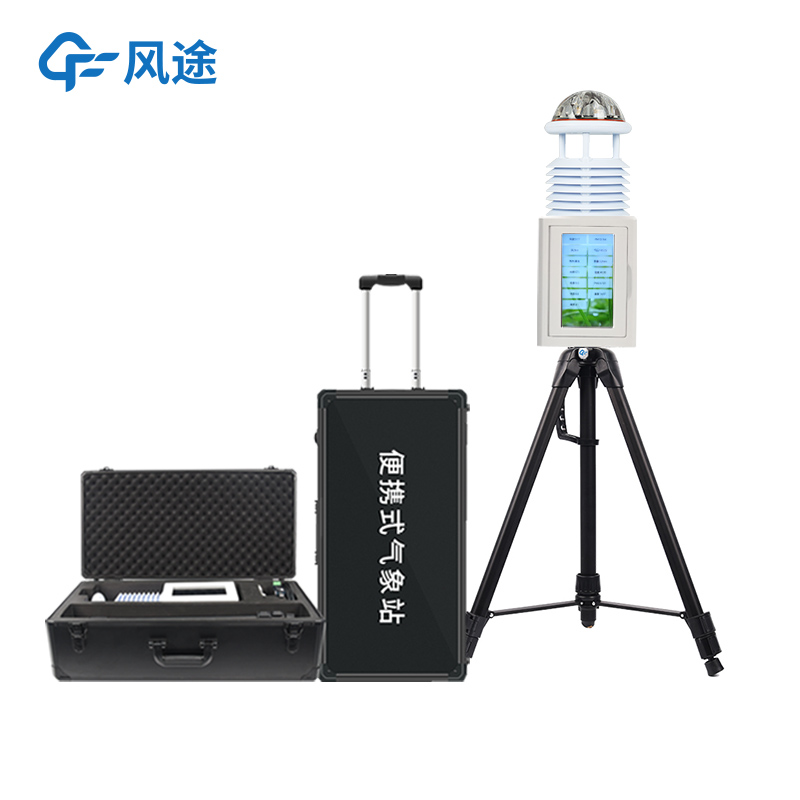Shandong Fengtu IOT Technology Co., Ltd
Sales Manager:Ms. Emily Wang
Cel,Whatsapp,Wechat:+86 15898932201
Email:info@fengtutec.com
Add:No. 155 Optoelectronic Industry Accelerator, Gaoxin District, Weifang, Shandong, China

Sales Manager:Ms. Emily Wang
Cel,Whatsapp,Wechat:+86 15898932201
Email:info@fengtutec.com
Add:No. 155 Optoelectronic Industry Accelerator, Gaoxin District, Weifang, Shandong, China
time:2025-02-13 09:09:28 source:Weather Station viewed:240 time
In emergency response, meteorological conditions have a significant impact on rescue operations. Conducting emergency drills with a Portable Weather Station can make the drills more realistic and effectively improve the emergency response level. The entire process can be divided into three key stages: preparation, drill, and evaluation.
Preparation Stage
It is necessary to select the right weather station according to the type of drill and the site environment. For example, for forest fire drills, choose equipment that can accurately measure temperature, humidity, and wind speed. For flood disaster drills, focus on equipment with high-precision rainfall measurement. After selection, comprehensively check all components of the equipment, battery power, and sensor calibration to ensure the normal operation of the equipment. At the same time, clarify the drill objectives, plan the types of simulated meteorological disasters, the occurrence locations and times, and reasonably assign tasks to the participating personnel to ensure that everyone performs their duties.
Drill Stage
After arriving at the scene, place the weather station in an appropriate position and start collecting data. According to the pre - arranged plan, create specific meteorological scenarios through equipment settings or software simulation. For example, when simulating heavy rain, set the precipitation intensity, duration, temperature, and humidity. When simulating strong winds, set different wind speeds and directions. Arrange a dedicated person to monitor the data, use GPRS or other means to transmit the data to the emergency command center, and the staff analyze the data with special software. The participating personnel make emergency responses based on the meteorological data. The rescue team determines the rescue route and material drop points, and the commanders adjust the rescue strategy according to the changes in the data.
Evaluation Stage
After the drill, review the data collected by the weather station, evaluate the equipment performance, check for transmission problems, summarize the deficiencies in data collection and processing, and propose improvement measures. Comprehensively evaluate the drill effect from aspects such as the timeliness of emergency response, the scientific nature of decision - making, and the degree of departmental cooperation. Analyze the supporting role of meteorological data in decision - making, summarize experience and lessons, so as to be more calm in dealing with emergencies in the future.

As an important part of the power system, the safe operation of the transmission line directly affects the social and economic development. Therefore, in the actual production, it is necessary to do a good job in the maintenance of the transmission line to ensure that the transmission line has good...
Traditional weather stations are often large, fixed facilities established within standardized observation fields. They provide highly accurate data but come with high construction costs, long implementation cycles, and fixed locations. However, for field scientific expeditions, on-site rescue durin...
The FT-BN20 Portable Visibility Sensor launched by Fengtu Technology is a device specifically designed for fields that require rapid acquisition of atmospheric visibility data in field and complex environments. It integrates portability, high precision, and ruggedness into one compact unit.In...
Meteorological conditions can affect the development of disaster relief work. As a device that can quickly and accurately obtain on-site meteorological information, the Portable Weather Station provides key basis for rescue decisions.The Portable Weather Station can real-time monitor multiple meteor...